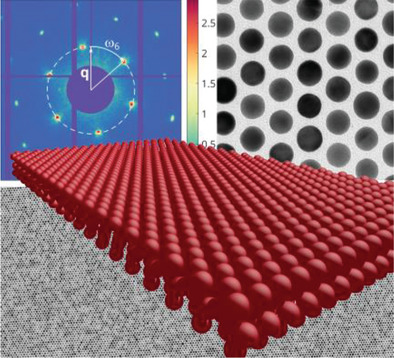
Our study performed at beamline P10 at PETRA III is about the structure of plamonic supercrystals built from gold nanoparticles.
Supercrystals composed of plasmonic nanoparticles constitute a promising material platform for tailored light-matter interactions. The optimization of their optical properties requires precise syntheses and a detailed structural characterization that addresses not only the basic geometrical parameters but also the degree of order. Herein, plasmonic supercrystals with a well-defined layered structure are studied by a combined transmission electron microscopy, small-angle X-ray scattering and X-ray cross-correlation analysis (TEM-SAXS-XCCA) approach. It is demonstrated that scanning small-angle x-ray scattering (SAXS) data can unambiguously be assigned to the number of crystalline layers by comparison with complementary transmission electron microscopy (TEM) experiments on the same regions of interest. A small but significant increase of the lattice constant with increasing number of layers and a high degree of orientational order irrespective of the number of layers is found. This points to specifics of the supercrystal formation mechanism that could be utilized to improve the control of self-assembly for supercrystal geometries with subnanometer precision.
Adv. Mater. Interf., doi:10.1002/admi.202000919 (2020)





